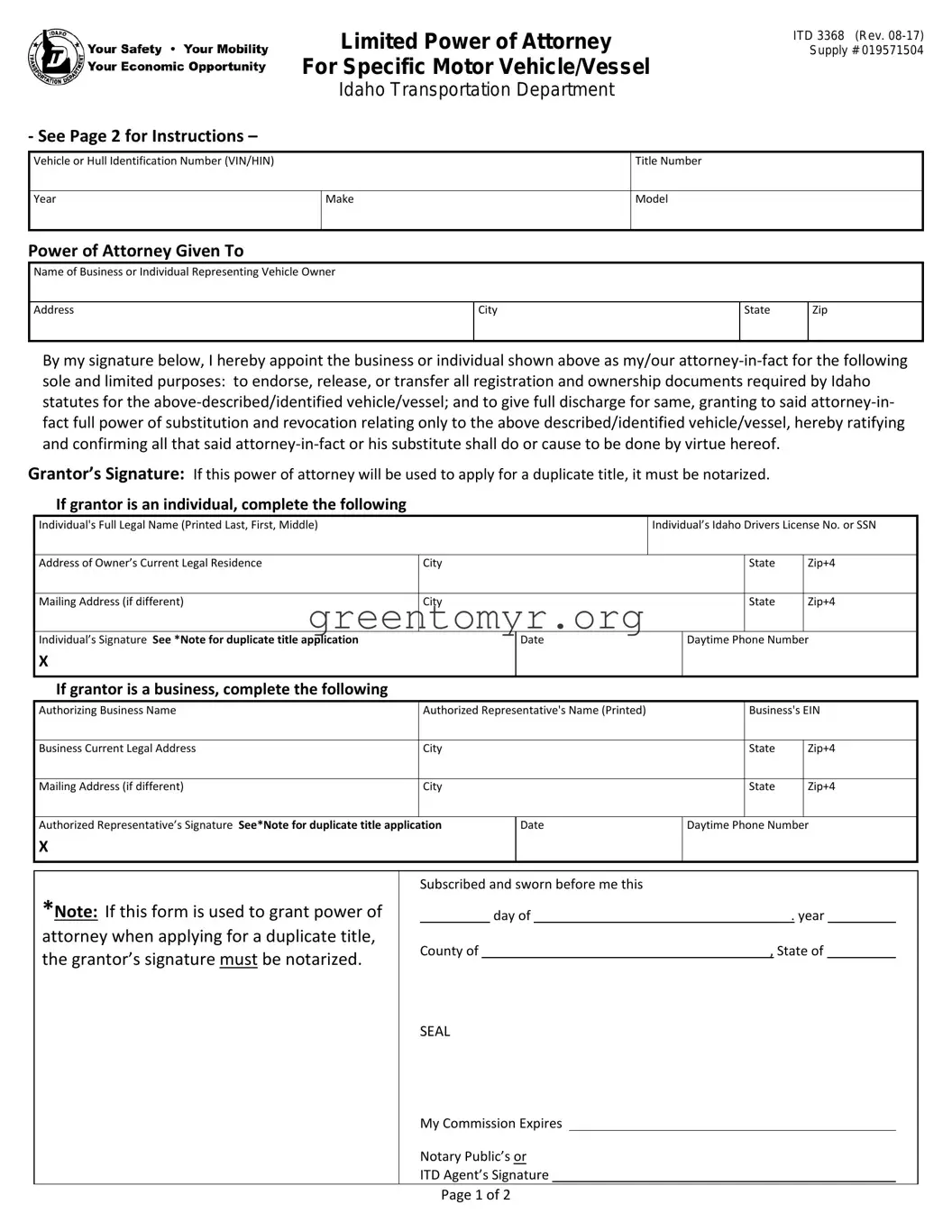Filling out the Vehicle Power of Attorney (POA) form 3368 is a critical step for those needing to designate someone to manage their vehicle-related matters. However, mistakes can arise during this process. One common error involves not including all required information. Each section of the form must be completed accurately to ensure that the document is legally valid. Omitting key details can lead to unnecessary delays or complications.
Another mistake involves incorrect signature placement. Both the principal and the agent must sign the form. If either signature is missing or misplaced, the form may not be honored by authorities. Review the signature requirements carefully.
People also often neglect to date the form. A signature without a date can cause confusion about when the authority was granted. Always include the date alongside each signature to provide clarity.
Failing to provide complete identification information is another frequent issue. The form requires the full names and addresses of both the principal and agent. Providing incomplete or inaccurate information may result in the document being rejected.
Checking the powers granted to the agent is essential as well. Many individuals do not review these options thoroughly. Ensure that the agent has the appropriate powers needed to manage the vehicle. Specific authority should be granted clearly, or the purpose of the POA may be undermined.
Another mistake often made is not verifying the agent’s understanding of their responsibilities. It’s important to discuss the vehicle matters with the appointed agent prior to submission of the form. Confirm that they understand what is required of them.
Some individuals overlook the importance of notarization. Depending on state requirements, notarization may be necessary for the form to be valid. Always check your local regulations to ensure compliance.
Inaccurate vehicle information can also lead to issues. Ensure that the vehicle identification number (VIN), make, model, and year are all provided correctly. Any discrepancies may result in complications during the processing of vehicle-related tasks.
Lastly, individuals sometimes forget to keep a copy of the completed form. Having a duplicate ensures that both parties can refer to the document if needed. It's wise to keep a record of all legal documents for your personal safety and reference.

